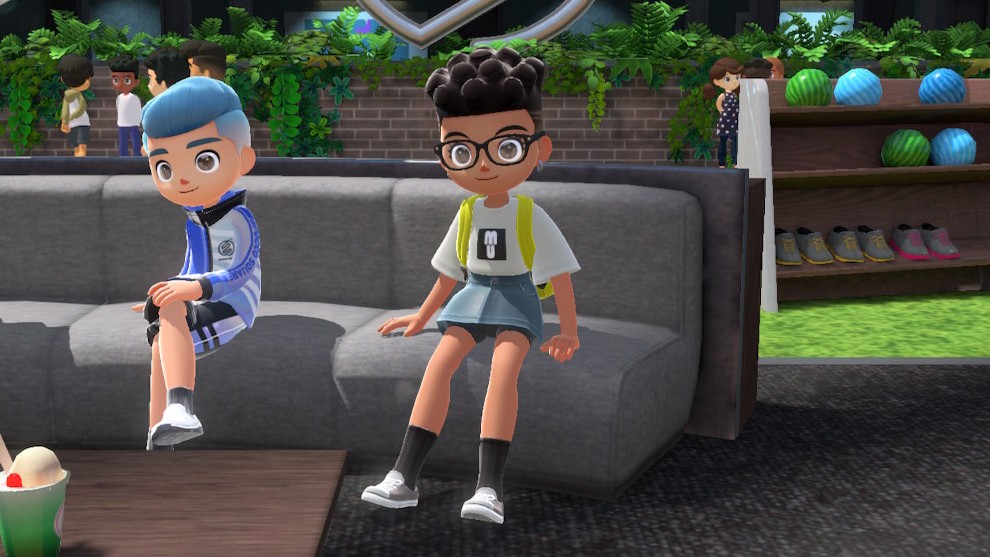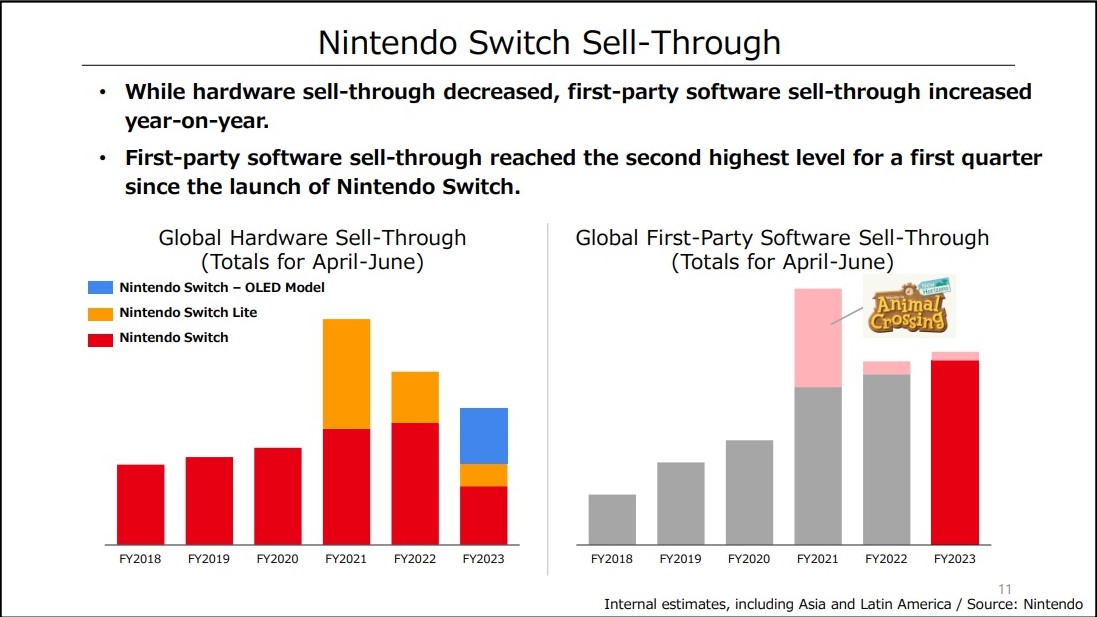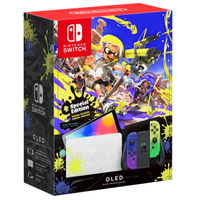Nintendo's declining sales due in part to economic issues and part shortages
Going up despite trending downward.

What you need to know:
- Nintendo released their Q1 financial report for the current FY23 fiscal year.
- It revealed that Nintendo Switch hardware sales declined by 22.9% compared to Q1 of the previous fiscal year.
- Software sales declined by a lesser amount, selling 8.6% less than they did this time last fiscal year.
Financial reports give both consumers and shareholders insight into the health of a company, as well as the popularity of the products and services on offer. Nintendo released its financial report today, detailing the company's performance in the first quarter of their current FY23 fiscal year.
For the uninitiated, Nintendo's fiscal year begins on April 1 of every year, and ends on March 31 of the following year, after which the time period is named. This means that Nintendo's current fiscal year is FY23, beginning on April 1, 2022 and ending on March 31, 2023.
With that out of the way, here are some highlights from Q1 2023:
Sales and profit
- Net sales — 307.4 billion JPY, down 4.7% compared to Q1 2022
- From dedicated video game platforms — 295.6 billion JPY, down 4.3% compared to Q1 2022
- From mobile and IP-related income — 10.9 billion JPY, down 16.8% compared to Q1 2022
- From playing cards, etc. — 0.8 billion JPY, up 56.9% compared to Q1 2022
- Net profit — 118.9 billion JPY, up 28.3% compared to Q1 2022
- Digital sales — 88 billion JPY, up 16% compared to Q1 2022
Regional sales
- The Americas — 43.8% of total global sales
- Europe — 26.1% of total global sales
- Japan — 20.1% of total global sales
- Other — 10% of total global sales
Nintendo Switch hardware and software
- Hardware — 3.43 million units, down 22.9% compared to Q1 FY22
- Nintendo Switch — 2.84 million units, down 60% compared to Q1 FY22
- Of this figure, the Nintendo Switch OLED model sold 1.52 million units
- Nintendo Switch Lite — 0.59 million units, down 48.4% compared to Q1 FY22
- Software — 41.41 million units, down 8.6% compared to Q1 FY22
- Digital software — 53% of total software sales, up 6.1 points compared to Q1 FY22
Total lifetime sales
- Nintendo Switch hardware — 111.08 million units
- Nintendo Switch software — 863.59 million units
The first quarter of FY23 continues the pattern of declining sales, which is indicative of the nature of the "pandemic boom" in FY21. Though sales decreased, overall net profits increased, that Nintendo attributes to a depreciating Japanese Yen, making their foreign currency income more valuable. The company also acknowledges that their lessening sales are due in part to the high price of their new Nintendo Switch OLED model, which stands at a $350 USD price tag compared to the original Nintendo Switch's $300 and the Nintendo Switch Lite's $200.
Every industry involved in the production and sale of electronic devices is suffering from the semiconductor chip shortage, and Nintendo is no different. A decrease in chip availability means that the company was likely unable to ship as much hardware as the market demanded, resulting in an overall sales decline.
Nintendo saw a total of four million-seller titles this quarter, compared to 9 million-seller titles in Q1 of FY22. The four games that broke the million-unit mark were Nintendo Switch Sports at 4.84 million units, followed by Mario Strikers: Battle League with 1.91 million units, then Kirby and the Forgotten Land at 1.88 million units, and the evergreen Mario Kart 8 Deluxe with 1.48 million units.
However, there are some things to be optimistic about. While Kirby and the Forgotten Land sold less than two million units this quarter, it sold over four million copies in its first 15 weeks, which is the highest sell-through for any game in the series and more than double what Kirby Star Allies sold at launch.
Master your iPhone in minutes
iMore offers spot-on advice and guidance from our team of experts, with decades of Apple device experience to lean on. Learn more with iMore!
While sales of hardware and software have significantly decreased since FY21, they did increase year-on-year, as can be seen in this graph:

It's evident that games like Animal Crossing: New Horizons set the bar extremely high for the company's sales, however, the circumstances surrounding its launch were unique and not indicative of sustainable growth.
As for Q2 plans and beyond, Nintendo saw the release of Xenoblade Chronicles 3 and tomorrow's addition to the Mario Kart 8 Deluxe Booster Course Pass. The company awaits the release of Splatoon 3 and Kirby's Dream Buffet, set to release within the summer window.
As for hardware, the first special edition version of the Nintendo Switch OLED model is set to release on August 26, featuring a Splatoon 3 theme and colourful accents. Though no Nintendo Direct was announced for Splatoon 3 as of the time of this writing, the loyal Splatoon fanbase is certainly excited for the series' fresh new coat of ink.
Nintendo Switch OLED model — Splatoon 3 edition
You won't need to wait for Splatoon 3's release on September 9 to have a fresh Switch. The Splatoon 3 edition of the Nintendo Switch OLED model features a wider, more vibrant OLED screen, a built-in LAN port for all your Turf War needs, and releases on August 26.
Pre-order from: Best Buy

Nadine is a freelance writer for iMore with a specialty in all things Nintendo, often working on news, guides, reviews, and editorials. She's been a huge Nintendo fan ever since she got to pet her very own Nintendog, and enjoys looking at Nintendo's place in the video game industry. Writing is her passion, but she mostly does it so that she can pay off her ever-growing debt to Tom Nook. Her favorite genres are simulation games, rhythm games, visual novels, and platformers. You can find her at @stopthenadness on Twitter, where she'll more than likely be reposting cute Animal Crossing content.

